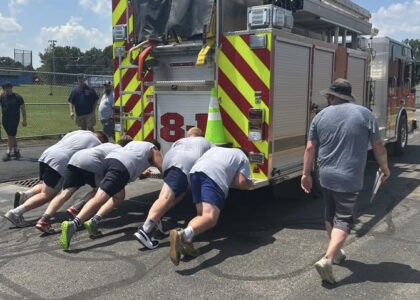The toughest neighborhood around

Photo by Steve Sorensen Almost for sure, a solitary fawn is neither neglected nor abandoned. The mother separates fawns so if a predator gets one, it won’t get both.
You probably think the world is a risky place for your kids, but it’s a lot worse for wildlife.
Springtime’s positive signs give us a sense that all is peace and love in the world of wildlife, but it’s a mistaken sense. While almost all wildlife participates in nature’s festival of renewal, it’s not like nobody gets hurt. Life isn’t a bed of roses for wildlife.
Songbirds should be exhausted after covering thousands of miles returning from winter vacations, yet they’re full of energy and ready to do the physically taxing behavior of reproducing. These bright feathered friends with their melodious songs are what gets the attention of humans, but behind that beautiful, romantic façade is a reality we don’t often notice.
Lots of springtime death occurs right alongside springtime life. Spend a few days in the woods after the snow is gone and you’ll see it too. The first sign is new green growth emerging where last year’s foliage disintegrates to provide the necessary nutrients.
You might have a habit of staying on a beaten path, but wander away from the trail and you’ll probably find bones. Head bones are no longer connected to neck bones, hip bones are no longer connected to back bones, and dem dry bones are mostly scattered about. The flesh is gone, also providing nutrition for scavengers and new vegetative growth.
Years ago, I watched a mother cottontail in my yard trying desperately to protect her nest of babies from double-teaming crows. In a few minutes mama was off somewhere grieving her loss.
Most of us have seen baby birds that have fallen from a nest. Go ahead and feel sympathy for the little fledglings, but you don’t have the capacity to mourn every featherless avian that falls from a nest and dies within days of hatching. Ever wonder why that spot under your eaves is prime nesting real estate? Simple. It’s away from the tougher neighborhoods.
The reality is that most animals are food for other animals. It takes a nest of turkey eggs 28 days to hatch, once all eggs are laid. That’s a lot of time for skunks and raccoons to find them and scramble them. Hens that succeed in protecting their nests might hatch out a dozen or more chicks, but the nurseries where they raise them are patrolled by hawks and other airborne predators. They can pick one off every day until the mother has only half, or less, of what she started with. Predators don’t seem to care that the wispy little hatchlings have barely any meat on their bones.
Hikers at this time of year often see newborn fawns curled up all alone, and jump to the conclusion that the mother has abandoned her baby. No, that’s the opposite of what has happened. Deer are a prey species, so a doe’s instinct is to sequester multiple fawns away from each other. It’s not abandonment. The fawn isn’t waiting to become venison veal for a coyote–even though that’s normal. At the time does are bearing fawns, coyote parents are transitioning their own young from milk to meat that they bring back to the den.
To counter that threat, the doe’s strategy ensures that if a bobcat or a coyote gets one fawn, it won’t get both. And the mother is close by, within hearing distance. If she hears an attack, she’ll risk her own life to fight off the predator. So, if you see a solitary fawn, leave it alone or YOU become the threat. Most likely, it’s neither neglected nor abandoned.
Despite nature’s appearance of peace and tranquility, wildlife will never live in a world where peace will guide the planets and love will steer the stars. Death and life go together in the natural world, and it’s supposed to be that way. Wildlife babies almost never need humans to step in and save them, even though they live in the toughest neighborhood around.
——
When “The Everyday Hunter” isn’t hunting, he’s thinking about hunting, talking about hunting, dreaming about hunting, writing about hunting, or wishing he were hunting. If you want to tell Steve exactly where your favorite hunting spot is, contact him through his website, www.EverydayHunter.com. He writes for top outdoor magazines, and won the 2015, 2018 and 2023 national “Pinnacle Award” for outdoor writing.


